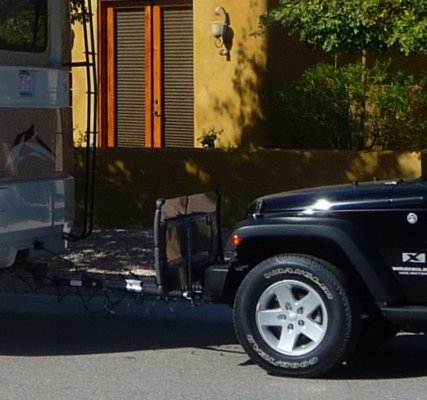Well we finally entered the world of the flat tow'rs. We purchased a 2014 Jeep Wrangler and now I would like some help as I know very little about flat towing and I know there is a very large group or rv'ers out there who tow Jeeps and other makes of vehicles who know a great deal about it
I am trying to find out what is the best and easiest to install tow bars out there ? Also is there one bast plate that is easier to install than the others ? Does the base plates have to be matched with the tow bar or are they interchangeable? I know that they cannot be made to fit different vehicles but can the base plates be paired with different manufacturers tow bars ? ( told you I didn't know much about them ).
Lastly which is the best and or easiest to use breaking system to buy? I'm not necessarily looking for the cheapest but if the cheapest is the better unit that is good .
I am also looking at ease of installation as I would like to install everything myself if possible. Thanks for all responses each and every one is appreciated....Alan
I am trying to find out what is the best and easiest to install tow bars out there ? Also is there one bast plate that is easier to install than the others ? Does the base plates have to be matched with the tow bar or are they interchangeable? I know that they cannot be made to fit different vehicles but can the base plates be paired with different manufacturers tow bars ? ( told you I didn't know much about them ).
Lastly which is the best and or easiest to use breaking system to buy? I'm not necessarily looking for the cheapest but if the cheapest is the better unit that is good .
I am also looking at ease of installation as I would like to install everything myself if possible. Thanks for all responses each and every one is appreciated....Alan

